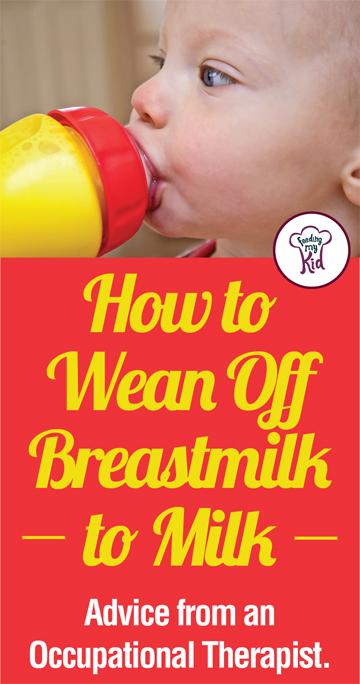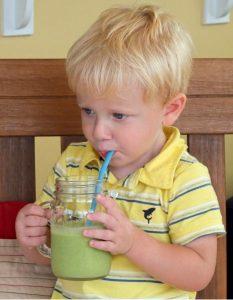
Transitioning toddlers from breast milk to cows’ (or other) milk is a common concern for moms.
Here Are A Number Of Strategies To Try With Your Little One:
- Gradually decrease the number of breastfeedings per day, and start by eliminating the time of day that is easiest to remove, like late morning, early afternoon or after meals.
- Breastfeeding just after waking up and before bedtime are not usually the best times to remove because these times are a soothing and bonding time for mom and baby.
- When you discontinue one of these feeding times, try to occupy your toddler with a fun activity (game, toys, outing, etc.)
- Encourage your toddler to play with and explore new developmentally appropriate foods. Children who are meeting their feeding milestones may wean themselves from breast milk.
Be patient, as fully weaning your toddler may take several months to accomplish.
If You Want to Wean Sooner
Try a complete cold turkey approach and offer plenty of milk and water so your child doesn’t risk dehydration.
Each child is different, so you may need to try a number of options to find one that works with your little one.
Here Are a Few Other Tips to Get Toddlers to Drink Milk:
- Try changing the sippy cups or bottles you are using. Try offering it to them in a cup with a straw. Make sure you hold the cup firmly to help with spillage. Sometimes just changing what they are drinking it out of can make them more likely to drink milk. Some kids prefer to drink water from one cup and milk from a different type of cup. Find out how to transition your baby to sippy cup.
- You can try adding some formula to their milk to sweeten it. Cow’s milk is generally not as sweet as your breastmilk, so adding formula can help to sweeten it and ease the transition for your little one. Then once your child has started drinking the formula-milk combination readily, you can slowly add less and less formula until your child is used to the taste of milk.
- Same strategy as above, but instead you can add Carnation Good Start or Bright Beginnings Soy Pediatric Drink Vanilla to the milk and then start to put less and less each day until you’ve completely weaned. Be careful to not get your child hooked on these types of drinks. They are loaded with sugar.
- You can also try adding a few drops of milk to their water to start flavoring it. This might get them used to the taste of milk slowly. Then slowly add more milk to the water until they are drinking primarily milk.
It’s Ok If Your Child Doesn’t Drink Milk
Hopefully your little one is still eating cheese and yogurt to make up for the calories, fats and calcium they are not getting from milk.
Also, leafy and green vegetables are a great source of calcium. Make sure they are getting their healthy fats from other sources.
Additionally, try to have him eat something with Vitamin D in it while he eats the calcium-rich food to aid in absorption.
Try Smoothies
 A great way to get children to eat calcium rich foods is by using these foods in smoothies. Check out these different recipes on Pinterest.
A great way to get children to eat calcium rich foods is by using these foods in smoothies. Check out these different recipes on Pinterest.
Foods high in vitamin D include cheese, egg yolks, fish oils, fatty fish like cod or salmon, mushrooms, and beef liver. Vitamin D is also naturally made by your body when you expose your skin to the sun, and is called the sun-shine vitamin.
Also, speak with your Pediatrician. It’s important to discuss these types of issues with your doctor.
Check Out These Other Great Resources:
- Breastfeeding Diet: What to Eat When Breastfeeding for More Milk
- How To Breastfeed In Public. Tips and Hacks.
- Breastfeeding Twins What I Wish Someone Told Me [Part 2]

